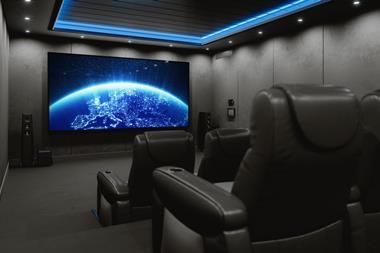Although startups within the high net worth market may showcase greater digital capabilities than current incumbents, Criterion’s operations director emphasises that service is still king when it comes to this genre of customer
New entrants to the high net worth (HNW) market are predicted to cause “some disruption” because “they are digitally very smart” and are “working in a different way”, according to Mark Pierce, operations director at loss adjusting firm Criterion.
Pierce explained that Criterion has been in conversation with “startups [and] potential new MGAs in the [HNW] space who feel there is an opportunity there for them”.
Pierce believes this opportunity is centred around the fact that new entrants to the HNW market are “working in a different way – whether it’s digitalisation, either of the underwriting and the writing of the business and/or the digitalisation of the claims process. I think new entrants probably feel that they can do that better, potentially at a better price point”.
He explained: “What I’ve seen is they are digitally very smart, so they’ve got really good systems, they’ve got really good ways of capturing data.
“Because many of the platforms they are looking to launch on are digital platforms, I think that’s going to give them not necessarily a competitive advantage because obviously they’re very small, but [it] may well give them a price advantage because if you can do a lot of [work] digitally and/or with [artificial intelligence] or things that do not involve a person, then clearly that takes some of the cost out of your business and you can pass that on in modestly reduced premiums.”
However, Pierce warned that tech-savvy HNW-based startups still need to look to deliver high quality service levels because “service will be your stepping stone to success or your lead weight to the bottom”.

He continued: “If you don’t deliver on service, then quite frankly you can’t hold yourself out there as a high net worth insurer. That’s the key thing, that’s the level of expectation.
“That level of expectation won’t change. Over all the toys and all the digitalisation that they may be able to bring, if they can’t deliver a service, they won’t exceed beyond years one and two.”
This is particularly important around claims, Pierce added, which he feels is the “test of every policy”.
Despite this stark word of advice, Pierce also believes that these digital-centric market entrants are positive for the sector “because there’s clearly activity in the marketplace, there’s change and all the time there’s change, everyone’s going to keep on their toes”.
Moving the boundaries
Elsewhere in the HNW market, Pierce said that many insurers have redefined what they term high net worth versus medium net worth.
“Some of them have just took a step back and looked at the loss ratios and have decided where their lines need to be drawn or redrawn,” he explained.
In addition, Pierce believes there has been a return to “pure high net worth” and a reduction in the medium net worth market.
He said: “High net worth for them is high net worth, is the sum insured for buildings over a certain value, sum insured for contents over a certain value and if you don’t hit those trigger numbers, then they don’t consider you a high net worth customer.”
Furthermore, “you’ll probably see a moving of the boundaries about where perhaps more claims are handled from desk and fewer bigger claims are handled from the field and there may be insurers who are moving slowly into that space. But it’s more of an osmosis than a sprint”, Pierce added.
Hosted by comedian and actor Tom Allen, 34 Gold, 23 Silver and 22 Bronze awards were handed out across an amazing 34 categories recognising brilliance and innovation right across the breadth of UK general insurance.





















































No comments yet